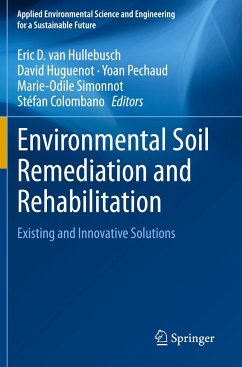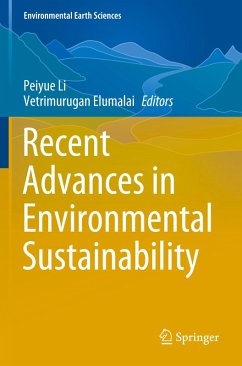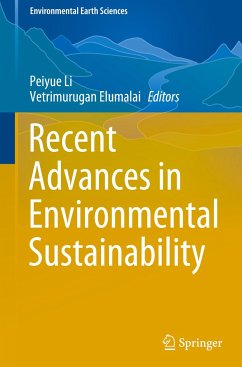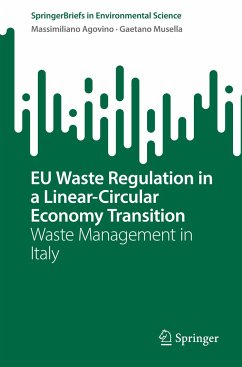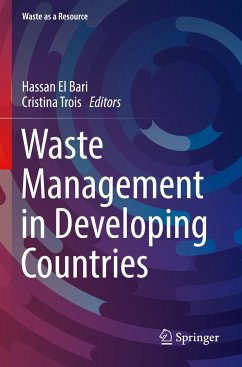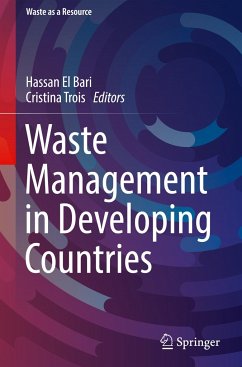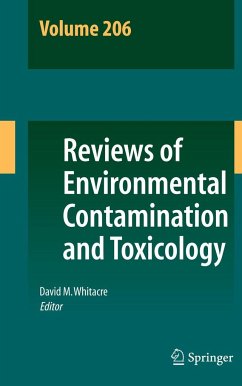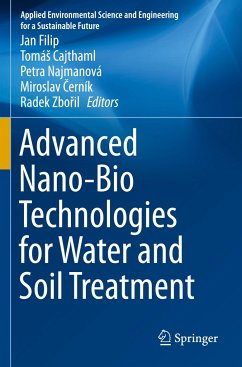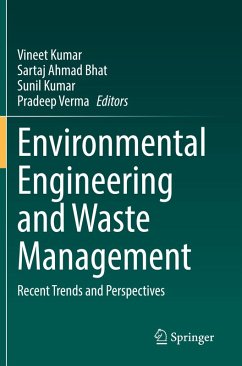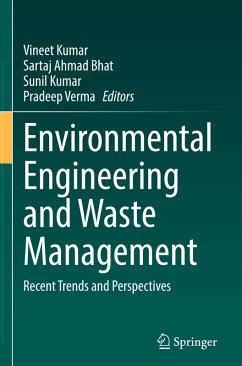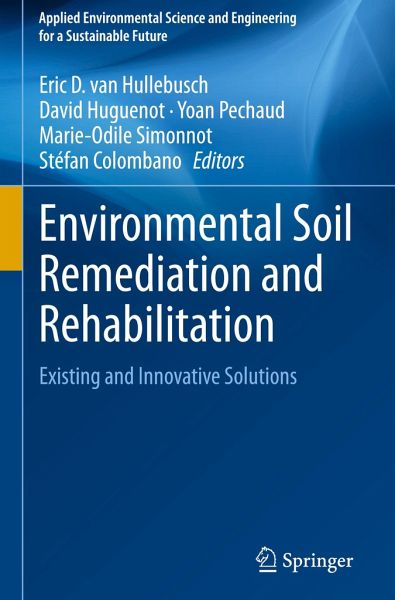
Environmental Soil Remediation and Rehabilitation
Existing and Innovative Solutions
Herausgegeben: van Hullebusch, Eric D.; Huguenot, David; Pechaud, Yoan; Simonnot, Marie-Odile; Colombano, Stéfan

PAYBACK Punkte
57 °P sammeln!
This book provides a comprehensive overview of innovative remediation techniques and strategies for soils contaminated by heavy metals or organic compounds (e.g. petroleum hydrocarbons, NAPLs and chlorinated organic compounds). It discusses various novel chemical remediation approaches (in-situ and ex-situ) used alone and in combination with physical and/or thermal treatment. Further, it addresses the recovery of NAPLs, reuse of leaching solutions, and in-situ chemical reduction and oxidation, and explores the chemical enhancement of physical NAPLs recovery from both practical and theoretical ...
This book provides a comprehensive overview of innovative remediation techniques and strategies for soils contaminated by heavy metals or organic compounds (e.g. petroleum hydrocarbons, NAPLs and chlorinated organic compounds). It discusses various novel chemical remediation approaches (in-situ and ex-situ) used alone and in combination with physical and/or thermal treatment. Further, it addresses the recovery of NAPLs, reuse of leaching solutions, and in-situ chemical reduction and oxidation, and explores the chemical enhancement of physical NAPLs recovery from both practical and theoretical perspectives. Also presenting the state-of-the-art in waste-assisted bioremediation to improve soil quality and the remediation of petroleum hydrocarbons, the book is a valuable resource for students, researchers and R&D professionals in industry engaged in the treatment of contaminated soils.



